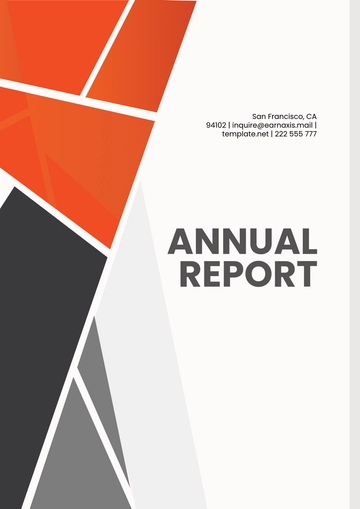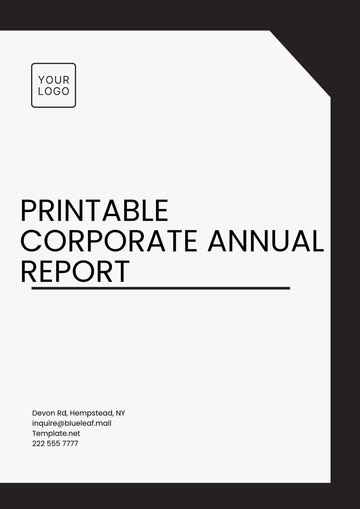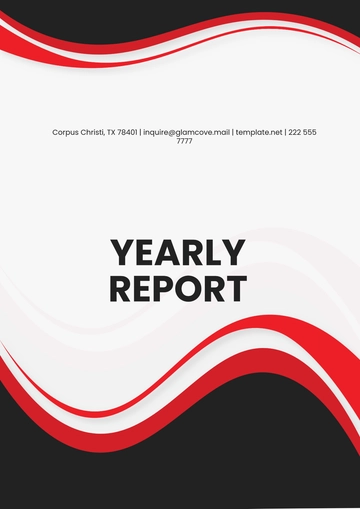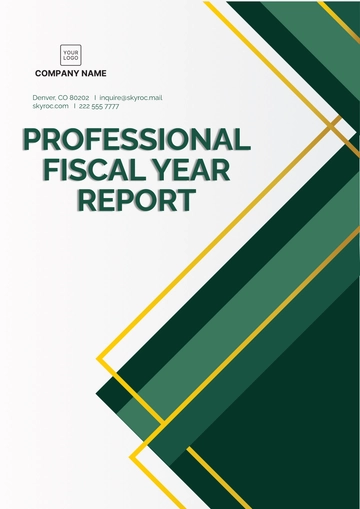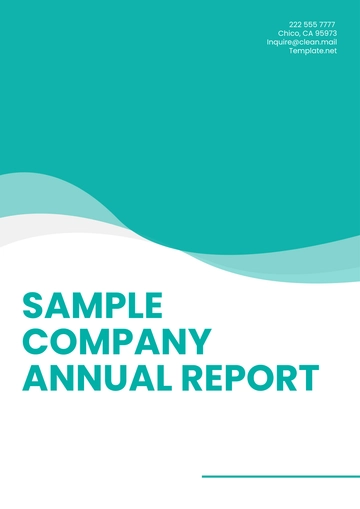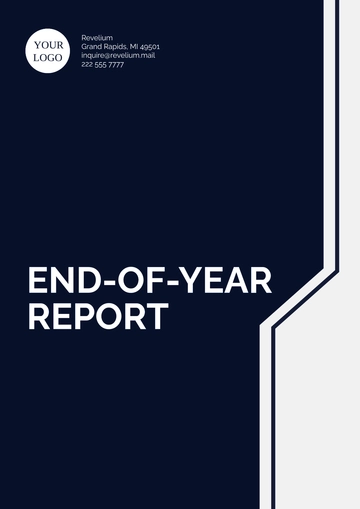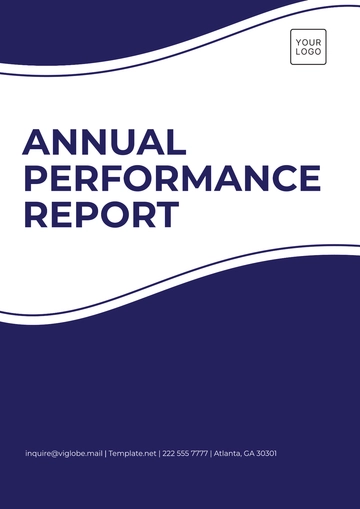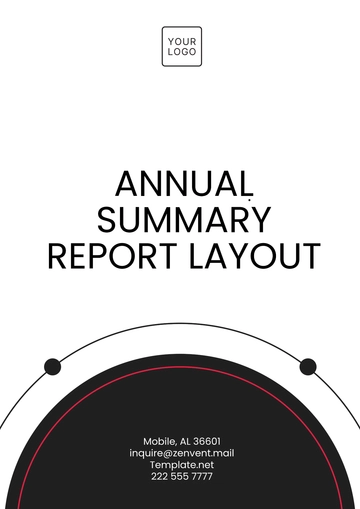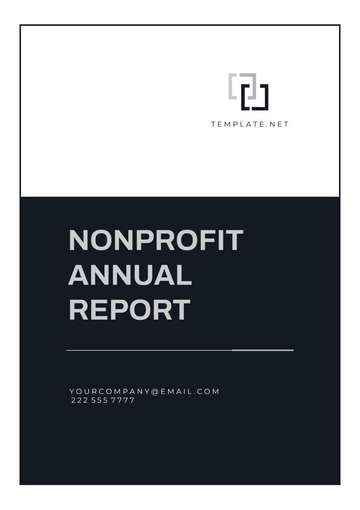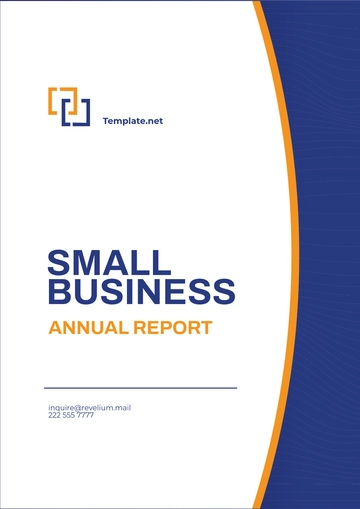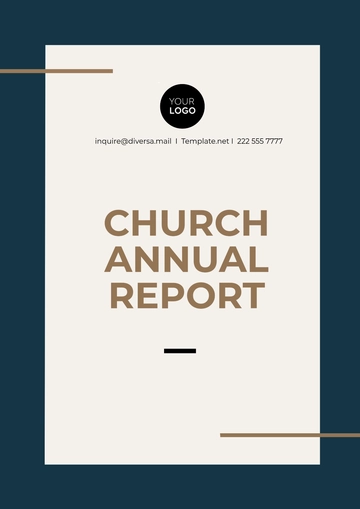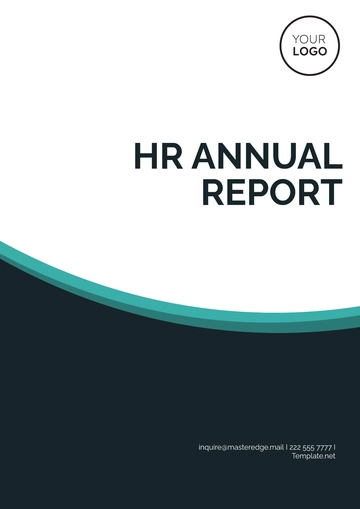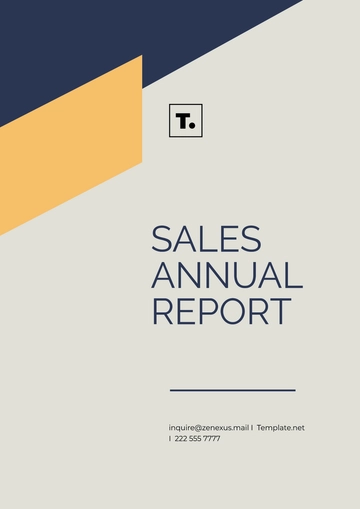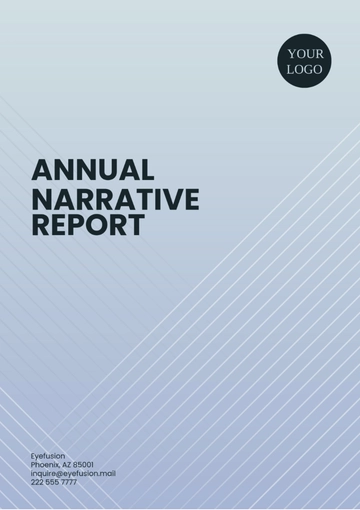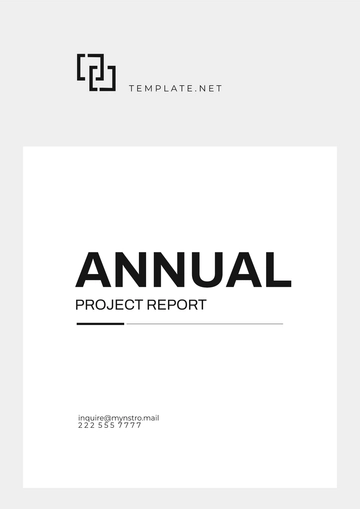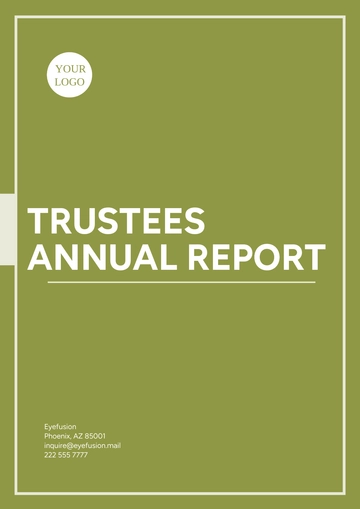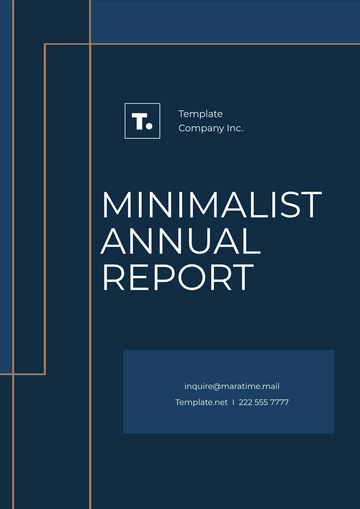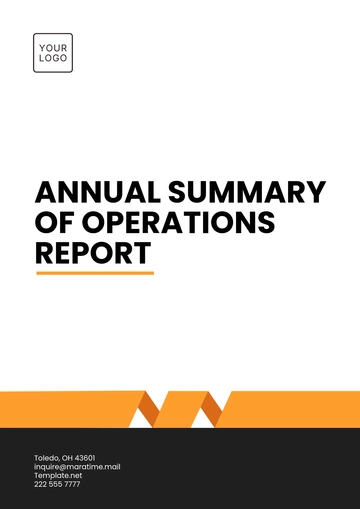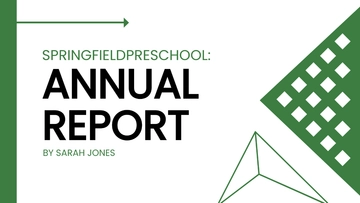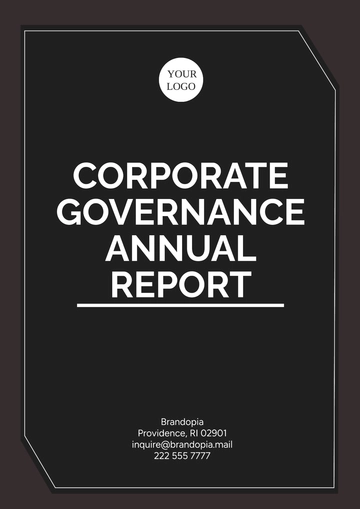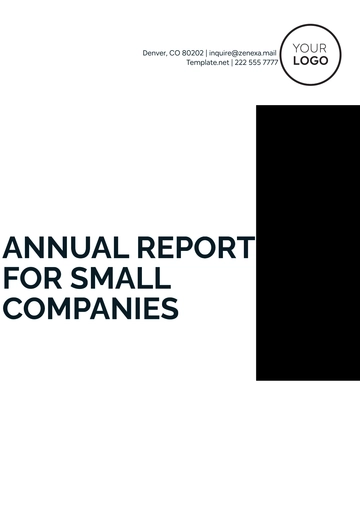Free Annual PPE Usage Report
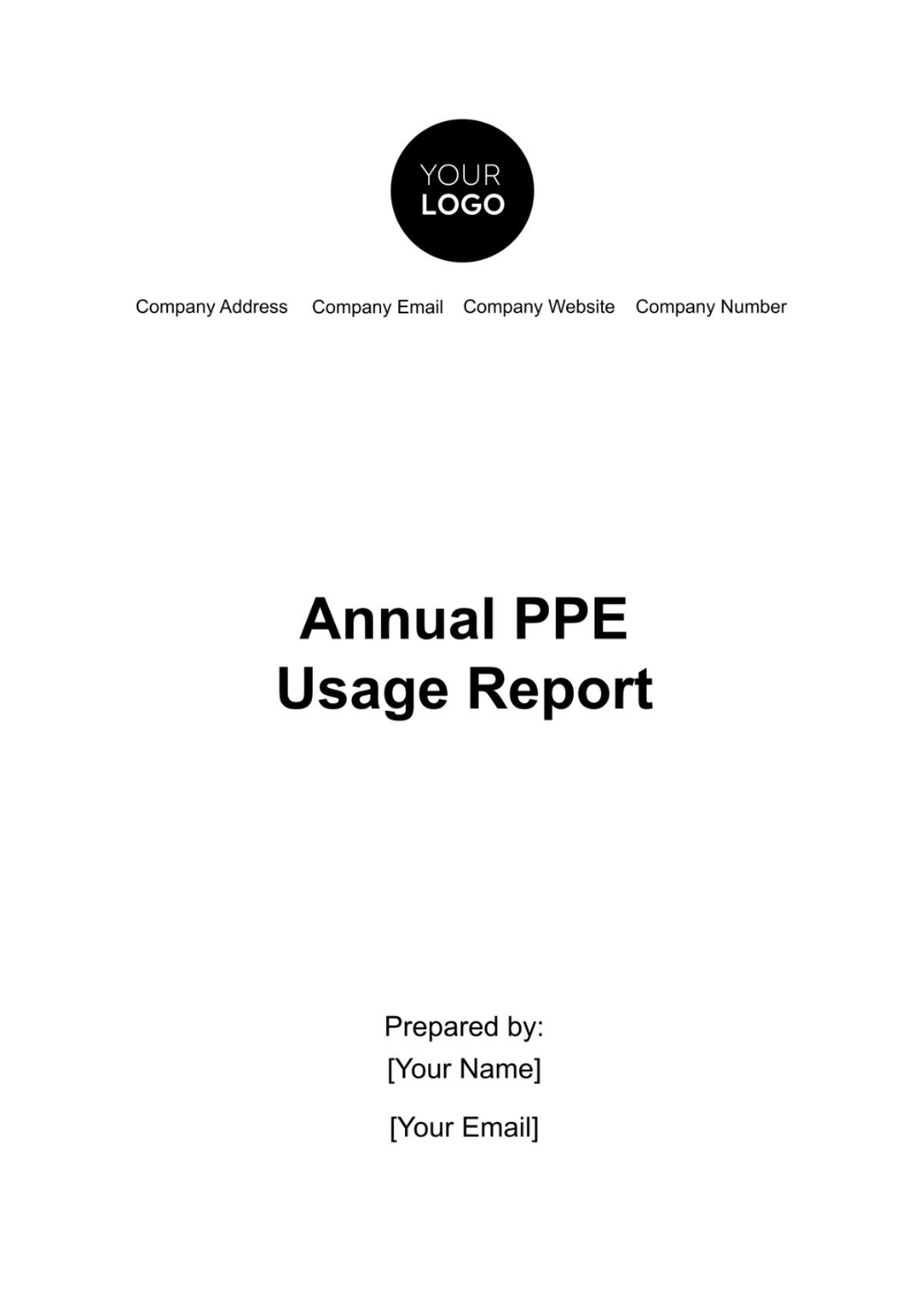
Executive Summary
A. Overview
The year 2050 marked a significant milestone for [Your Company Name] in terms of its commitment to employee safety through the effective utilization of Personal Protective Equipment (PPE). This comprehensive Annual PPE Usage Report offers an in-depth analysis of our PPE program, highlighting key accomplishments, challenges, and areas of improvement. By examining the data and insights presented herein, we can make informed decisions to enhance workplace safety further.
In 2050, [Your Company Name] continued its unwavering dedication to the safety of its employees. The report examines various aspects of our PPE program, including inventory management, allocation, utilization, maintenance, safety incident reporting, compliance with policies, and associated costs.
B. Key Highlights
Enhanced PPE Allocation: We achieved a more efficient allocation of PPE resources to employees across all departments, ensuring that the right protective gear was readily available for every job role.
Improved Utilization: The data indicates a steady increase in PPE utilization throughout the year, demonstrating that employees are actively complying with safety protocols.
Reduced Incident Rates: The year 2050 witnessed a decrease in safety incidents related to PPE, reflecting the positive impact of our safety initiatives.
Cost Efficiency: Despite increased utilization, we managed to control PPE costs effectively through strategic procurement and maintenance efforts.
These highlights signify our commitment to fostering a safer work environment for all employees and underline our proactive approach to PPE management.
Introduction
A. Purpose of the Report
The primary purpose of this Annual PPE Usage Report is to provide a comprehensive evaluation of the usage and management of Personal Protective Equipment within [Your Company Name]. It serves as a critical tool for assessing the effectiveness of our safety measures and ensuring the well-being of our workforce.
This report aims to fulfill the following objectives:
Assess PPE Allocation: We will analyze how PPE resources were distributed across departments and job roles to ensure that all employees had access to the necessary protective gear.
Evaluate PPE Utilization: We will examine how effectively PPE was used by employees in various tasks and job functions.
Monitor Safety Incidents: We will review safety incidents related to PPE, identifying trends, and providing insights into areas that require attention.
Cost Analysis: A detailed cost analysis will be presented to demonstrate the financial implications of our PPE program.
B. Scope
This report encompasses all aspects of PPE usage and management within [Your Company Name] during the calendar year 2050. It covers all departments, job roles, and types of PPE used across the organization.
PPE Inventory
Types of PPE
As of December 31, 2050, [Your Company Name] maintained a diverse inventory of Personal Protective Equipment (PPE) to cater to the specific safety needs of our workforce. Our inventory included a wide range of PPE types, such as:
Head Protection: Helmets, hard hats.
Eye and Face Protection: Safety glasses, goggles, face shields.
Respiratory Protection: Dust masks, respirators, air-purifying devices.
Hand Protection: Gloves (latex, nitrile, cut-resistant, etc.).
Body Protection: Coveralls, vests, aprons, lab coats.
Foot Protection: Safety boots, shoes.
Hearing Protection: Earplugs, earmuffs.
B. Initial Inventory (Beginning of the Year)
At the start of the year on January 1, 2050, our initial inventory of PPE was meticulously recorded. This inventory included precise quantities of each type of PPE item available in our stockrooms, distribution centers, and various workstations. This baseline inventory served as a crucial reference point for assessing usage and procurement needs throughout the year.
C. Purchases during the Year
Throughout the year 2050, [Your Company Name] proactively managed PPE supplies through regular procurement activities. We continuously monitored usage trends and anticipated needs to ensure that our employees always had access to the necessary protective gear. Purchases included both routine restocking of items like disposable gloves and masks and bulk acquisitions to meet specific operational requirements.
D. Final Inventory (End of the Year)
As the year came to a close on December 31, 2050, a final inventory count was conducted. This comprehensive inventory audit allowed us to determine the remaining quantities of each type of PPE. By comparing the final inventory to the initial count, we could assess the consumption rate, identify any discrepancies, and plan for restocking or replacement needs in the upcoming year.
PPE Usage
A. PPE Allocation
Throughout 2050, [Your Company Name] continued its commitment to fair and effective PPE allocation. Allocation decisions were driven by rigorous job-specific risk assessments, ensuring that employees received the appropriate level of protection for their tasks and work environments. This allocation process took into account factors such as hazard severity and exposure frequency.
For example, employees working in environments with potential head hazards were provided with helmets, while those exposed to chemical hazards were equipped with the appropriate eye protection, gloves, and respiratory gear.
B. PPE Utilization
The year 2050 saw a notable increase in PPE utilization across all departments within [Your Company Name]. This positive trend indicated a growing commitment to safety among our employees. It was a result of continuous efforts to monitor and improve usage through training, awareness campaigns, and regular assessments.
The data clearly illustrates the upward trajectory of PPE utilization, and we took proactive steps to address any usage issues or compliance challenges promptly.
PPE Maintenance and Replacement
Maintaining the integrity and effectiveness of PPE was a priority for [Your Company Name] in 2050. Routine inspections, maintenance schedules, and rigorous quality control measures were implemented to ensure that PPE remained in optimal condition. Damaged or expired PPE items were promptly replaced to uphold the highest safety standards.
Safety Incidents and Compliance
A. Incident Reports
During the year 2050, [Your Company Name] maintained a robust incident reporting system to track safety-related incidents, including those related to PPE. The data collected and analyzed under this section provides a comprehensive overview of safety incidents:
Nature of Incidents: Incident reports captured various types of incidents, including injuries, near misses, and safety violations. These reports detailed the nature of each incident, such as slips, falls, chemical exposures, or equipment malfunctions.
Frequency and Trends: Incident frequency and trends were closely monitored. This allowed us to identify high-risk areas and activities and take proactive measures to mitigate risks. It was observed that the proactive use of appropriate PPE significantly reduced the severity of incidents.
Root Cause Analysis: For each incident, a thorough root cause analysis was conducted to determine the underlying factors contributing to the event. This analysis helped in identifying systemic issues that needed corrective actions.
B. Compliance with PPE Policies
In 2050, [Your Company Name] maintained stringent PPE policies and consistently communicated these to all employees. Compliance with these policies was closely monitored and assessed:
Training and Education: Employees received regular training on the proper use of PPE, reinforcing the importance of compliance. Training modules were designed to enhance awareness and skills related to PPE.
Audits and Inspections: Routine audits and inspections were conducted to ensure that employees were adhering to PPE policies. Any non-compliance issues were addressed promptly through corrective actions and additional training.
Policy Enhancements: Based on incident data and compliance assessments, PPE policies were periodically reviewed and updated to reflect industry best practices and the evolving needs of our workforce.
Cost Analysis
A. Total PPE Expenditure
In 2050, [Your Company Name] diligently tracked all expenses related to PPE procurement, maintenance, and replacement. This section provides a detailed breakdown of the total PPE expenditure, which includes:
PPE Purchases: The cost of acquiring new PPE items to meet operational needs, including regular restocking and bulk purchases for specific projects or departments.
Maintenance and Repairs: Expenses associated with the maintenance, servicing, and repairs of PPE to ensure that all equipment remained in optimal condition.
Replacement Costs: The cost of replacing damaged or expired PPE items to maintain the highest safety standards for our employees.
B. Cost per Employee
To assess the financial impact on individual employees, we calculated the average cost per employee for PPE in 2050. This metric provides insights into the allocation of resources and the cost-effectiveness of our safety initiatives:
Calculation Method: The cost per employee was calculated by dividing the total PPE expenditure by the total number of employees. This allowed us to determine the average investment in PPE protection for each team member.
Trends and Comparisons: We compared this metric with previous years to assess trends in cost per employee. Such comparisons help us evaluate the efficiency of our PPE management strategies and identify areas for potential cost savings.
Recommendations
In light of the findings and analysis presented in this report, the following recommendations are made to further enhance the effectiveness of [Your Company Name]'s PPE program and overall workplace safety:
A. Continuous Training and Education
Strengthen ongoing training initiatives to ensure that all employees are well-versed in the proper use and care of PPE.
Implement specialized training modules for specific PPE types or high-risk job roles.
Foster a culture of safety awareness by regularly conducting safety drills and scenario-based training.
B. Data-Driven Allocation
Leverage data analytics to optimize PPE allocation. Allocate resources based on historical incident data and risk assessments.
Implement a system for real-time tracking of PPE utilization to ensure that supplies are readily available where and when needed.
C. Maintenance and Inspection Protocols
Enhance maintenance and inspection protocols for PPE items, including regular checks and servicing schedules.
Introduce a digital tracking system to monitor the condition of PPE, ensuring that replacements are timely and cost-effective.
D. Incident Investigation
Strengthen the incident investigation process to conduct thorough root cause analyses for all safety incidents.
Use incident data to identify trends and prioritize corrective actions that address the underlying causes of incidents.
E. Policy Review and Communication
Regularly review and update PPE policies and procedures to align with industry best practices and changing work environments.
Improve communication channels to ensure that all employees are informed of policy changes and updates.
Conclusion
The year 2050 witnessed significant strides in [Your Company Name]'s commitment to employee safety through effective PPE management. The data and insights presented in this Annual PPE Usage Report provide a comprehensive picture of our efforts and achievements. While challenges were met, the dedication to improving workplace safety remains unwavering.
As we move forward, it is essential to acknowledge that safety is an ongoing journey. By implementing the recommendations outlined in this report, [Your Company Name] will continue to evolve its safety program, ensuring that our employees are well-protected and our workplace remains a safe and secure environment.
- 100% Customizable, free editor
- Access 1 Million+ Templates, photo’s & graphics
- Download or share as a template
- Click and replace photos, graphics, text, backgrounds
- Resize, crop, AI write & more
- Access advanced editor
Track and analyze Personal Protective Equipment (PPE) usage efficiently with Template.net's Annual PPE Usage Report Template. This editable and customizable tool provides a structured format for compiling and assessing PPE usage data. Utilize our intuitive Ai Editor Tool to tailor the report to your organization's specific needs effortlessly, ensuring informed decision-making and safety compliance.
You may also like
- Sales Report
- Daily Report
- Project Report
- Business Report
- Weekly Report
- Incident Report
- Annual Report
- Report Layout
- Report Design
- Progress Report
- Marketing Report
- Company Report
- Monthly Report
- Audit Report
- Status Report
- School Report
- Reports Hr
- Management Report
- Project Status Report
- Handover Report
- Health And Safety Report
- Restaurant Report
- Construction Report
- Research Report
- Evaluation Report
- Investigation Report
- Employee Report
- Advertising Report
- Weekly Status Report
- Project Management Report
- Finance Report
- Service Report
- Technical Report
- Meeting Report
- Quarterly Report
- Inspection Report
- Medical Report
- Test Report
- Summary Report
- Inventory Report
- Valuation Report
- Operations Report
- Payroll Report
- Training Report
- Job Report
- Case Report
- Performance Report
- Board Report
- Internal Audit Report
- Student Report
- Monthly Management Report
- Small Business Report
- Accident Report
- Call Center Report
- Activity Report
- IT and Software Report
- Internship Report
- Visit Report
- Product Report
- Book Report
- Property Report
- Recruitment Report
- University Report
- Event Report
- SEO Report
- Conference Report
- Narrative Report
- Nursing Home Report
- Preschool Report
- Call Report
- Customer Report
- Employee Incident Report
- Accomplishment Report
- Social Media Report
- Work From Home Report
- Security Report
- Damage Report
- Quality Report
- Internal Report
- Nurse Report
- Real Estate Report
- Hotel Report
- Equipment Report
- Credit Report
- Field Report
- Non Profit Report
- Maintenance Report
- News Report
- Survey Report
- Executive Report
- Law Firm Report
- Advertising Agency Report
- Interior Design Report
- Travel Agency Report
- Stock Report
- Salon Report
- Bug Report
- Workplace Report
- Action Report
- Investor Report
- Cleaning Services Report
- Consulting Report
- Freelancer Report
- Site Visit Report
- Trip Report
- Classroom Observation Report
- Vehicle Report
- Final Report
- Software Report
